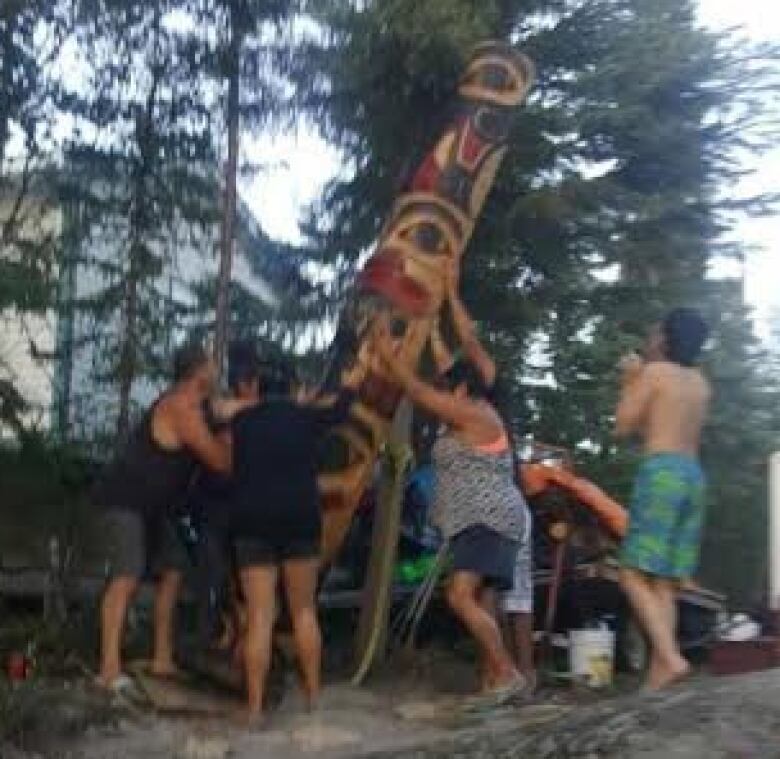Haida totem pole raised in Ndilo, N.W.T., overlooking Great Slave Lake
'It was really important to me that it face the water,' says Lila Erasmus
A totem pole is not something you usually see in the Northwest Territories but "Jonee," as Lila Erasmus has named it, now stands a proud, 3.5 metres tall overlooking Great Slave Lake from her backyard in Ndilo.
"When we thought about where it was going to sit, it was really important to me that it face the water," says Erasmus.

"In B.C., I know that the totems are on the water edge to guide people as they boated in, so when they would see a totem they would know they were closer to home they would know which clan area they were in, they would know which tribal area. They would give them some indication and some identity.
"I wanted it closer to the water so that boaters could see it but I also wanted it as a protection for our family as well."
The totem pole was given to Erasmus by her brother Ron Fraser, who lives in Grande Prairie, Alta. Fraser passed on three totem poles: two to his daughters and this one to his baby sister.
On top sits a bald eagle. Underneath that, a man holding a shield for protection. Then a killer whale and a raven at the bottom. It was hand-carved by a Haida Gwaii artist, Jesse Jones.
Erasmus says her brother was good friends with Jones, who was killed in an accident in Thailand in 2011.
"So Ronnie was very concerned about where it was going to go and who it was going to go to and so when he had offered it to us as a gift, it was really important that we take good care of it.It was really important that we put it in a place where it felt at home.
"It also faces southwest which is where B.C. is, and this is where she comes and so she faces her home as well."
'I knew it was a girl'
Erasmus is a member of the Na-Cho Nyak Dun First Nation from Mayo, Yukon. Her father's family is from Fort Chipewyan, Alta. For 17 years, she's called Ndilo her home. Now, it's Jonee's home.

The totem pole made the journey from Grande Prairie to Ndilo in a crate and on a trailer, driven by Erasmus's sister.
"I was stunned, shocked, and overwhelmed when it came. I expected it to be a lot smaller," she said.
During a family gathering on Mondayit took five adults to raise, using straps, and was then bolted into the bedrock.
"It wasn't an easy task, it took us probably a good hour before it was up."
Is it common to name a totem pole? Erasmus doesn't know. But she says, "I knew it was a girl. I knew it was a feminine energy that came with it. It was a protecting energy that came with her and I felt that right away.
"And so when he [Fraser]told me that the artist was Jesse Jones, it was almost immediately that I knew that her name was going to be Jonee."












_(720p).jpg)


 OFFICIAL HD MUSIC VIDEO.jpg)
.jpg)



























































































